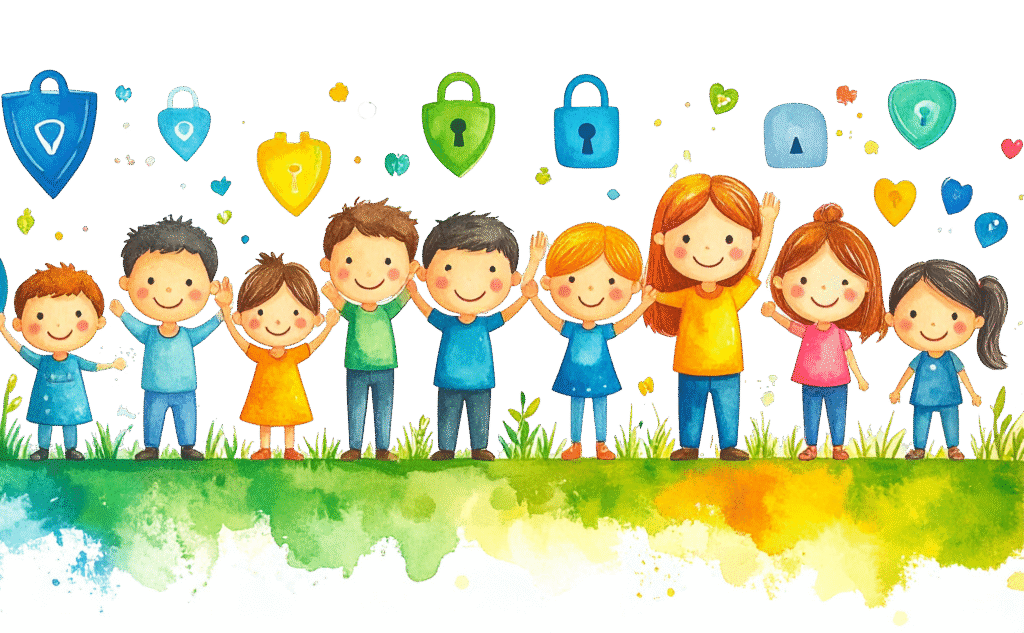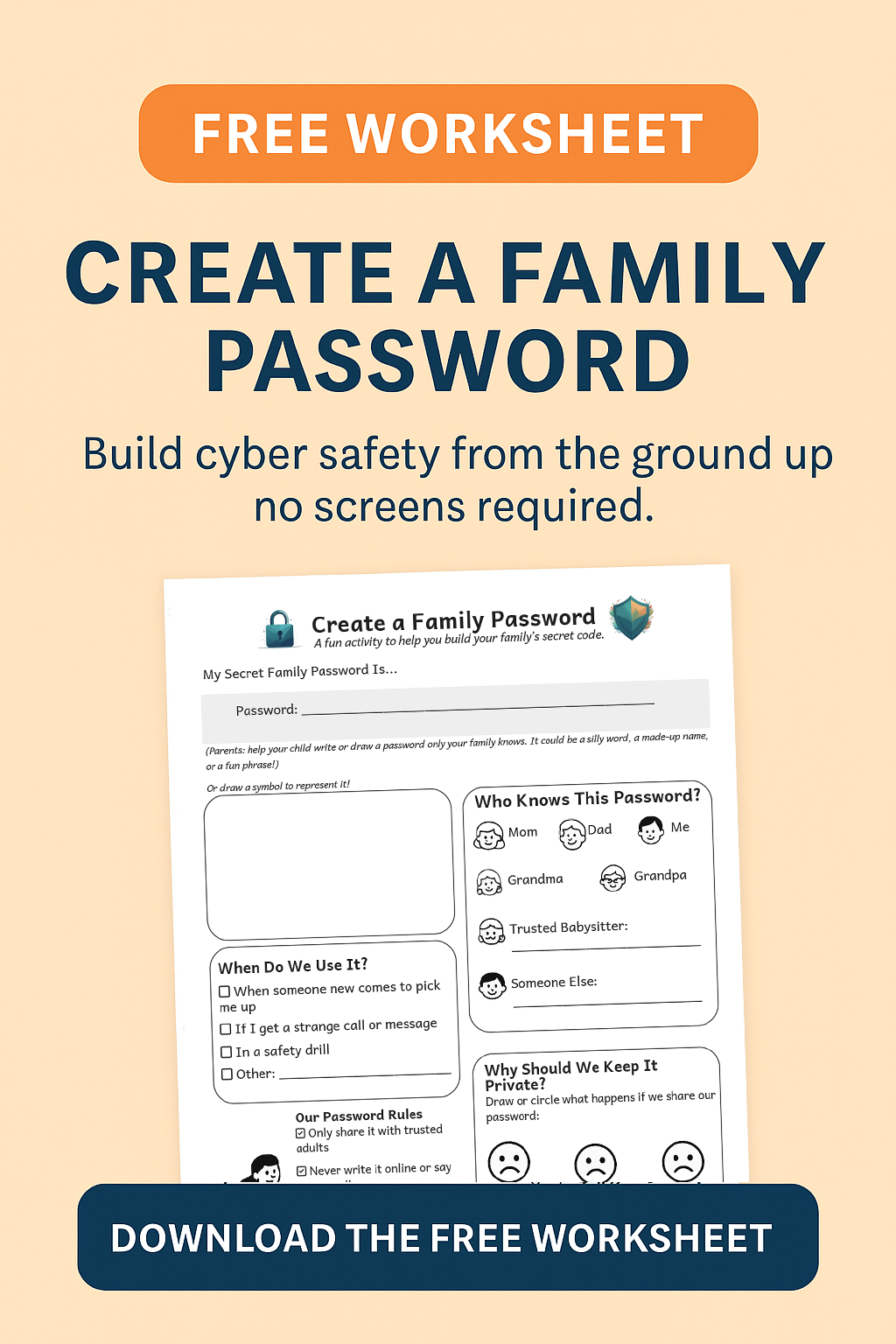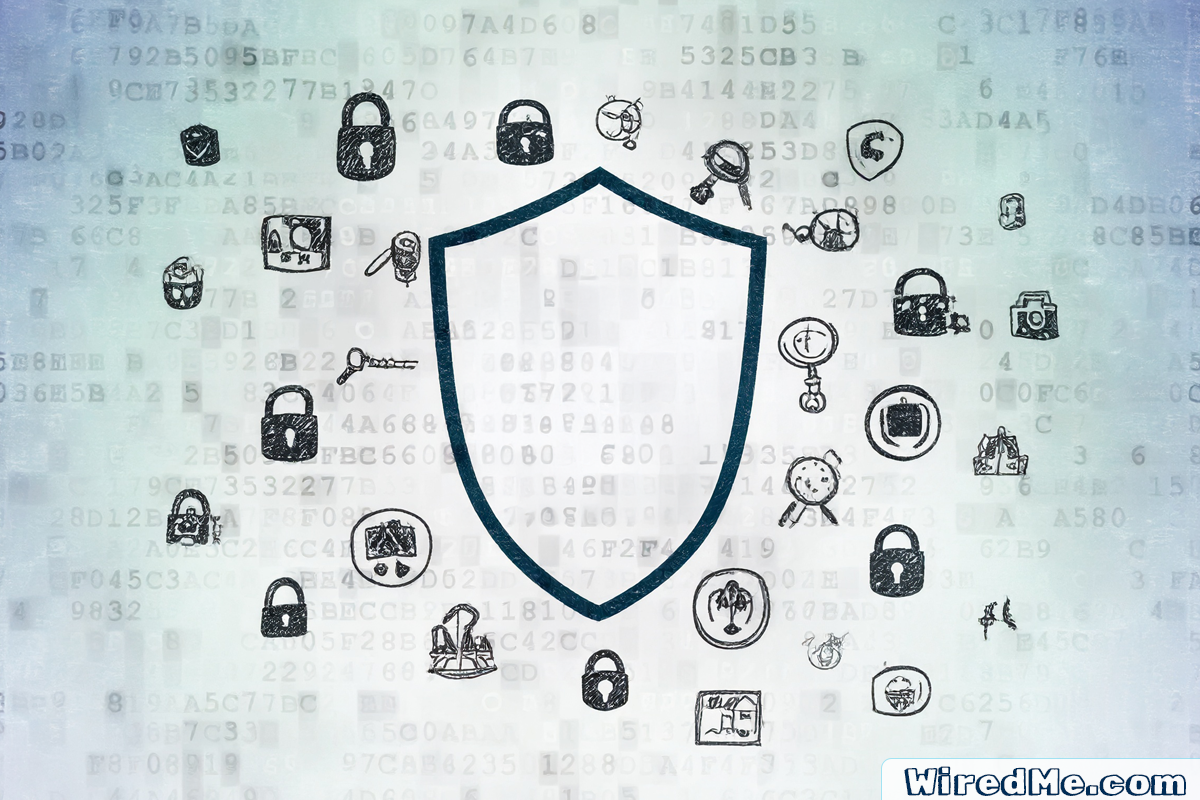When people hear “cyber security,” they often picture teens on social media, hackers in hoodies, or password breaches at big companies. But the truth is, cyber security for young kids starts much earlier. Even in the early elementary years, children can begin learning how to protect their information, build trust with adults, and think before they share.
As a web developer, I work with systems that rely on safe logins, secure data, and constant vigilance. At home, I have a different role. I teach my kids how to be careful thinkers and kind digital citizens. And just like reading or math, cyber security for young kids is something we can start now.
Let’s look at why this matters in the early years.

What Kids Can Understand About Cyber Safety in K–3
You don’t have to wait until your child has an email address or a device to begin these lessons. Many of the early concepts are already familiar. Kids understand things like secrets, rules, and asking for help. We just have to connect those ideas to the digital world in ways that make sense to them.
Here are a few things young kids can grasp:
- What’s private and what’s okay to share
(We protect things like our full name, birthday, and address.) - What to do when something feels off or confusing
(If you’re unsure, stop and check with a grown-up.) - Who are the safe people to ask for help
(Reinforce trusted adults at home and at school.)
Simple phrases like “We don’t share that,” or “Let’s check together” go a long way. They help kids feel confident and give them a framework for future safety online.
Why Cyber Security for Young Kids Should Start Early
By the time a child gets a tablet or school Chromebook, habits are already forming. Some of those habits are helpful. Others are not.
In cyber security, we talk about attack surface. It means the places where systems are vulnerable. For kids, their behavior can become the weak point if they haven’t learned the basics. Clicking without thinking, oversharing, or trusting strangers online often comes from never being taught another way.
That is why early childhood is a good time to begin. Kids are naturally curious, eager to copy adults, and love to play pretend. You can introduce big ideas like safety, privacy, and trust without even touching a computer. The earlier you start, the more those ideas stick.
Cyber Security for Young Kids Without Screens
Here are a few ways to start teaching cyber safety with no screens at all:
- Create a family password for emergency pick-up
(This builds awareness around private information.) - Play “Guess the Bot” where one person gives silly instructions and the other acts like a robot
(This teaches critical thinking and how to handle strange or tricky input.) - Tell stories about safe and unsafe choices
(“Max the Mouse told someone his password. What do you think happened?”)
These activities may seem simple, but they help build real skills:
- Pausing to think before clicking or sharing
- Recognizing when something feels wrong
- Building trust with adults
- Learning to ask for help
Cyber security for young kids isn’t just a tech issue. It’s a thinking skill. The same logic that helps a child recognize a pattern or sort shapes can help them make smart decisions online later.
You can also find trusted tips at Common Sense Media, which offers excellent advice for parents and educators alike.
You do not need to be a cyber security expert to raise a child with strong digital habits. You also do not need to start with a laptop or phone. Start with your voice. Start with pretend play. Start with rules that help kids understand what safe behavior looks like.
If you want to raise thoughtful digital citizens, the time to start is now.
Looking for more ideas on teaching safe tech habits at home?
Check out our full guide on cyber safety for kids
What’s Next: Create a Family Password
Build cyber safety for young kids from the ground up, no screens required.
This printable worksheet is a fun, hands-on way to teach young kids about privacy, trust, and safety. Together, your family will create a secret password, talk about when to use it, and explore why keeping it private matters.
Perfect for ages 5 to 8.
Your child will learn:
- What information is private
- Who they can safely share with
- When to ask for help
- How to think before sharing
What’s Inside:
- Fill-in-the-blank password section
- Privacy safety checklist
- Who-knows-it tracker
- Superhero-style drawing prompt
- Conversation starters for parents

Download the Free Worksheet Now
Start building digital awareness today! No tech, no prep.
FAQ: Cyber Security for Young Kids
Can young children really understand cyber security?
Yes. Kids in K–3 already learn about safety, rules, and privacy in real life. These same ideas can be taught in simple ways that relate to technology and online behavior.
What age should I start talking about online safety?
As soon as your child can follow rules and understand “stranger danger,” they’re ready to hear simple messages about what to share, who to trust, and when to ask for help.
Do I need a computer to teach my child cyber safety?
Not at all. Many important habits like thinking before sharing or asking for help can be taught through stories, role-play, and everyday conversations.
How can I make these lessons stick for young learners?
Keep it playful and use repetition. Games, stories, chants, and logic activities help young kids build habits in a way that feels natural and fun.


Leave a Reply